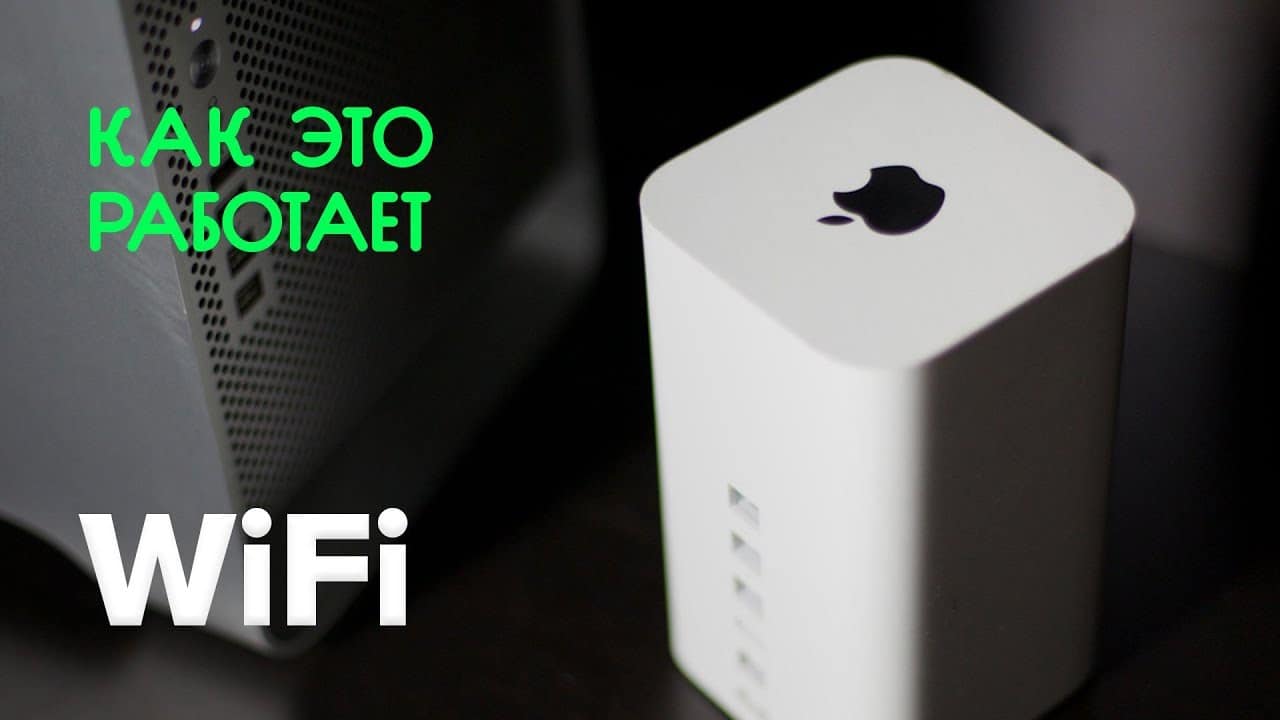Wi-Fi is a wireless technology that allows you to connect devices without using wires. The history of Wi-Fi began in the late 1980s, when the US Federal Communications Administration began looking for ways to use the free radio frequency range to transmit data. In 1997, the Wi-Fi Alliance was created, which began developing standards for wireless communication. The first standard, 802.11, was released in 1997 and provided data transfer rates of up to 2 Mbps. Since then, several new standards have been released, such as 802.11a, 802.11b, 802.11g, 802.11n, and 802.11ac, which increased data transfer rates and expanded the frequency range. Wi-Fi became widespread in the 2000s, when the first laptops with built-in wireless adapters were released. Today, Wi-Fi is used everywhere, from free hotspots in cafes and airports to home networks and business networks. Wi-Fi continues to evolve, and today we see new standards emerging, such as Wi-Fi 6E, which allows for frequencies up to 6 GHz for even faster data transfer.
- Wi-Fi standards: 802.11a/b/g/n/ac/ax
- Differences between Wi-Fi and Internet
- How to set up Wi-Fi on devices
- Setting up Wi-Fi on smartphones and tablets
- Setting up Wi-Fi on a computer and laptop
- Wi-Fi Security
- How to protect your Wi-Fi network from hackers and viruses
- What type of encryption to choose for Wi-Fi
- Wi-Fi problems and solutions
- Slow Wi-Fi speed and how to increase it
- Wi-Fi connection problems and how to solve them
Wi-Fi standards: 802.
11a/b/g/n/ac/ax
Wi-Fi is a wireless communication technology used to transmit data between devices using radio waves. Wi-Fi standards define the parameters of data transmission, frequencies and ranges of radio waves used for communication.
There are several Wi-Fi standards: 802.
11a, 802.
11b, 802.
11g, 802.
11n, 802.
11ac and 802.
11ax. Standards differ in data transfer speed, frequency range and other parameters.
Standard 802.
11a uses the 5 GHz frequency range and allows data transfer rates of up to 54 Mbit/s. Standard 802.
11b operates in the 2.4 GHz frequency range and provides speeds of up to 11 Mbps. Standard 802.
11g also operates in the 2.4 GHz frequency range, but provides higher data transfer rates - up to 54 Mbps.
Standard 802.
11n uses both the 2.4 GHz and 5 GHz frequency bands and can reach speeds of up to 600 Mbps. Standard 802.
11ac operates only in the 5 GHz frequency range and provides speeds of up to 1 Gbps. Standard 802.
11ax also operates in the 2.4 GHz and 5 GHz frequency bands and can reach speeds of up to 10 Gbps.
The choice of Wi-Fi standard depends on the required data transfer speed, the number of devices that will use the network, and other factors. Some devices can only work with a certain Wi-Fi standard, so you need to make sure your devices are compatible before choosing.
Differences between Wi-Fi and Internet
Wi-Fi and the Internet are two different concepts that are often confused with each other. Wi-Fi is a wireless data transmission technology that allows you to connect to the Internet wirelessly. The Internet is a global network that connects computers and devices around the world.
Wi-Fi uses radio waves to transfer data between devices such as computers, smartphones, tablets and others. To connect to Wi-Fi, you must have a device that supports this technology and a Wi-Fi access point that connects to your Internet provider.
The Internet is a global network that connects many computers and devices around the world. To connect to the Internet, you must have a device that can connect to the Internet, such as a modem or router, and a subscription with an Internet provider.
Thus, Wi-Fi is a technology that allows you to wirelessly connect to the Internet, while the Internet is a global network that connects computers and devices around the world.
How to set up Wi-Fi on devices
Setting up Wi-Fi on devices may seem like a daunting task, but it's actually quite simple. All you need to do is find the appropriate section in the device settings and enter the password for your Wi-Fi network.
First of all, make sure your router is connected to the internet and turned on. Next, open the Wi-Fi settings on your device and select the Wi-Fi network you want to connect to. If you don't see your network in the list, try refreshing the list or enter the network name manually.
When you select your network, you will be prompted to enter a password. Enter your password and click 'Connect'. If the password is entered correctly, your device should successfully connect to the Wi-Fi network.
If you're having trouble connecting to Wi-Fi, make sure you've entered the correct password and that the router is within range of your device. If the problem persists, try rebooting the router or your device.
Setting up Wi-Fi on your devices shouldn't be a problem if you follow these simple instructions. Enjoy a fast and reliable Internet connection on your device!
Setting up Wi-Fi on smartphones and tablets
When you first set up your smartphone or tablet, Wi-Fi should be one of the first things you pay attention to. With Wi-Fi, you can connect to the Internet and use many applications such as browsers, social networks and instant messengers without having to use your mobile data.
To set up Wi-Fi on your device, you first need to select an available Wi-Fi hotspot. This could be an access point in your home, office, or public place such as a coffee shop or airport. When you find a Wi-Fi hotspot, you must select it and enter a password if required.
To find available Wi-Fi hotspots on your device, you can open Wi-Fi settings and search. You'll usually find this under 'Settings' or 'Network & Internet'. When you find a list of available Wi-Fi hotspots, select the one you want and enter the password if required.
Once you have set up Wi-Fi on your device, you can freely connect to the Internet and use many applications without using mobile data. This can help you save money on your phone bill and allow you to use the Internet anywhere there is a Wi-Fi hotspot available.
In general, setting up Wi-Fi on your smartphone or tablet shouldn't pose much of a problem. Follow the above steps and you can easily set up Wi-Fi on your device and enjoy free internet access.
Setting up Wi-Fi on a computer and laptop
Wi-Fi is a wireless data transfer technology that allows you to connect devices to the Internet without using wires. In order to use Wi-Fi, you need to set up a connection on your computer or laptop.
First, you need to make sure that Wi-Fi is turned on on your device. Typically the power button is located on or near the keyboard. If necessary, you can enable Wi-Fi through the operating system settings.
After Wi-Fi is turned on, you need to select a wireless access point (Wi-Fi network) from the list of available networks. This is usually done through the Wi-Fi icon in the bottom right corner of the screen.
After selecting a network, you must enter a password, if required. After entering the password, your computer or laptop will be connected to the Wi-Fi network and you can start using the Internet.
Please note that the quality of the connection may depend on the distance to the wireless access point and the presence of radio frequency interference. If you have connection problems, you can try rebooting the router or changing the Wi-Fi network channel in the router settings.
Setting up Wi-Fi on a computer or laptop may seem like a daunting task, but if you follow the steps, it shouldn't cause much of a problem.
Wi-Fi Security
Wi-Fi is a technology that allows devices to connect to the internet wirelessly. However, Wi-Fi can be vulnerable to unauthorized access, so it’s important to take steps to protect your network.
The first step to secure Wi-Fi is to set a password. The password must be complex and consist of letters, numbers and special characters. Never use simple passwords such as '123456' or 'password'.
Additionally, you can hide the name of your network to prevent it from being detected by other devices in your area. This can prevent unauthorized access to your network.
Finally, you can use a VPN (virtual private network) to protect your internet traffic. A VPN encrypts your traffic and hides your IP address, making it impossible for anyone to eavesdrop or track it.
Wi-Fi security is an important aspect of keeping your network and personal information safe. Follow these simple steps to secure your network and stay safe online.
How to protect your Wi-Fi network from hackers and viruses
Wi-Fi networks are becoming increasingly popular and are widely used in homes and offices. But as the number of devices connected to Wi-Fi increases, so does the threat of hacker attacks and viruses. Here are some simple but effective ways to protect your Wi-Fi network.
1. Change the default password
Most routers come with a preset password that is easy to guess. Therefore, the first step to protecting your Wi-Fi network is to change the default password to a more complex one. Use a long password consisting of letters, numbers and special characters.
2. Enable encryption
Encryption makes data transmitted over Wi-Fi unintelligible to outsiders. The most common encryptions are WEP, WPA and WPA2. It is best to use WPA2 as it is considered the most secure.
3. Disable SSID Broadcast feature
The SSID is the identifier of your Wi-Fi network, which appears in the list of available networks. Disabling SSID Broadcast makes your network invisible to others. This is not 100% security, but it does make it difficult for those who don't know your network ID to access your network.
4. Turn on your firewall
A firewall protects your network from malware and attacks. Most routers have a built-in firewall, which can be enabled in the router settings.
5. Update your router
Router manufacturers regularly release updates that fix vulnerabilities and improve security. Therefore, it is important to check for updates and install them promptly.
By following these simple measures, you can protect your Wi-Fi network from hackers and viruses. But don't forget that security should be a constant concern and regularly scan your network for vulnerabilities.
What type of encryption to choose for Wi-Fi
Choosing the right type of encryption for Wi-Fi is a very important step to ensure the security of your wireless network. There are several types of encryption such as WEP, WPA and WPA2.
WEP is the oldest and least secure type of encryption. Hackers can easily break through it using special tools. Therefore, if you can, avoid using WEP.
WPA is a more secure type of encryption than WEP, but is still vulnerable to attacks. It uses stronger encryption methods and more complex passwords.
WPA2 is the most secure type of encryption and uses more complex encryption methods and longer passwords. If you have the option, use WPA2 to ensure the highest level of security for your wireless network.
It's also important to remember that even when using the most secure type of encryption, your network may still be vulnerable if your password is too simple or easy to guess. Therefore, use strong passwords and update them regularly.
Wi-Fi problems and solutions
Although Wi-Fi is a convenient and practical way to connect to the Internet, it does have its problems. For example, there may be a connection problem or Wi-Fi may be too slow. In this article, we'll look at some of the most common Wi-Fi problems and how to solve them.
1. Wi-Fi signal is too weak
If the Wi-Fi signal is too weak, then the Internet speed may be very slow. To solve this problem, you need to make sure that the router is located in the center of the house and not against a window or wall. You can also try installing a Wi-Fi extender.
2. No Wi-Fi connection
If the device does not connect to Wi-Fi, then you need to check whether the password is entered correctly. If the password is entered correctly, then you need to make sure that the router is turned on and working correctly. If all else fails, you can try rebooting the router.
3. Wi-Fi is too slow
If Wi-Fi is too slow, then you need to check whether the channel is occupied by other devices. If many devices are connected to Wi-Fi, channel conflict may occur. To solve this problem, you can try changing the Wi-Fi channel to a freer one.
Conclusion
Wi-Fi is a convenient way to connect to the Internet, but it has its own problems. However, many of them are very easy to solve. If you have a problem with Wi-Fi, then don't panic. Just follow our tips and you can quickly solve the problem.
Slow Wi-Fi speed and how to increase it
Wi-Fi is a wireless data technology that uses radio waves to communicate between devices. However, despite all the benefits of Wi-Fi, many users face problems with slow speeds.
To increase your Wi-Fi speed, there are some simple solutions you can try. First, make sure your router is in the center of your home and not blocked by walls or other obstructions.
Secondly, try changing the Wi-Fi channel to a less busy one. In most cases, many routers operate on channels that are used by other devices such as microwave ovens or cordless phones, which can result in slow Wi-Fi speeds.
Also, don't forget to update your router's firmware and check your Wi-Fi security settings, such as password and WPA2 security.
Using Wi-Fi boosters and antennas can also help increase Wi-Fi speeds in your home. In addition, many Internet providers offer the ability to increase speed for an additional fee.
Overall, following these simple guidelines will help increase Wi-Fi speeds and provide more stable connections between devices.
Wi-Fi connection problems and how to solve them
Wi-Fi is a wireless data technology that uses a radio wave connection to transmit information. Often, many users encounter problems connecting to Wi-Fi. Below are some of the most common problems and their solutions.
1. No Internet access: Wi-Fi may be connected, but there is no Internet access. Try rebooting your router or modem. Also check if the network name and password are entered correctly.
2. Signal is weak: If the Wi-Fi signal is weak, then the data transfer speed will be slow. Try moving closer to your router or installing a Wi-Fi extender.
3. Can't connect: If you can't connect to Wi-Fi, check whether the network name and password are entered correctly. Also try rebooting your device or router.
4. Slow Speed: If the Wi-Fi speed is slow, then it is possible that there are too many devices connected to the router. Try disabling unnecessary devices or updating your router.
Fixing these issues can help improve your Wi-Fi connection and provide faster internet access.
Read further:






